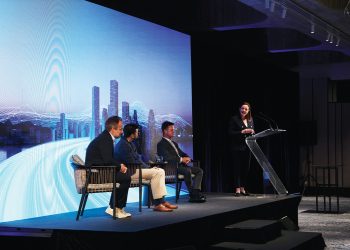A new report by Zillow shows that sellers are in a more advantageous position than buyers, so much so that they’re willing to overlook high rates and sell despite this potential pitfall, due to record levels of accrued equity.
This is evidenced by Zillow data, which showed a record high number of price cuts for this time of year being offered by sellers to buyers. Nearly 23% of Zillow listings had a price cut for the month of January.
The “lock-in effect,” wherein homeowners are reluctant to sell their property due to lower mortgage rates, appears to be giving way, as sellers find themselves in such an advantageous position that they’re willing to take a cut in negotiations and move on to other locations. The financial markets and economy at large are in stronger-than-expected positions, which may be encouraging sellers to pull the trigger on listing their properties, according to Zillow.
Zillow’s data backs up the fact that homeowners appear ready to cash in on equity, as new listings hitting the market rose 11.5% year-over-year.
At the same time, many sellers were able to get more than they bargained for on the market, despite the price decrease trend. Nearly 25% of homes that sold in December—the latest such data available from Zillow—sold for more than their original asking price. That is compared to 19% prior to the pandemic.
Zillow’s survey of recent sellers showed that 78% of that demographic was influenced to sell by life events, like landing a new job or a change in family size. The same data from Zillow’s survey of recent sellers show that just 54% of sellers then used their newfound capital to buy a home, down from 70% last year.
In strong contrast to sellers, buyers are feeling the heat of interest rates that have remained stubbornly high—ticking up to 7.04% in January.
In spite of the market having recently been tilted more toward sellers, Zillow’s market heat index shows that homebuyers had more leverage in January than in any other January for the past five years. Zillow says that buyers have a chance to find good deals on the margins of the market.
Looking at the raw data, Zillow tracked the metros that saw more listings with at least one price cut. The cities that saw the biggest proportional increases since last year were Denver, Colorado; Las Vegas, Nevada; San Diego, California; and Austin, Texas.
Overall, price cuts occurred most frequently in Phoenix, Arizona (33.5% of listings with a price cut); Tampa, Florida (32.4%); Jacksonville, Florida (30.8%); Orlando, Florida (29.1%); and Dallas, Texas (28.7%).
Homes that sell are typically under contract within a span of 38 days on the national level, according to Zillow. This is nine days slower than last year and nearly 10 days faster than pre-pandemic norms.
Regional variation in competition is substantial. Homes are coming off the market at breakneck speeds (less than two weeks) in metros like San Jose, California; Boston, Massachusetts; Seattle, Washington; and Washington, D.C., while taking a much longer time to sell in Southern markets like New Orleans, Louisiana and Atlanta, Georgia.











